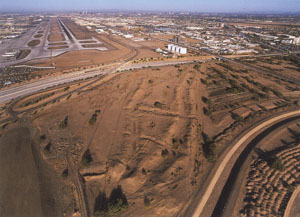
A combination of these processes brought about regional demographic decline that reached a crisis during the 15th century. This pattern stands in contrast to neighboring areas such as the middle Gila and San Pedro Valleys where substantial populations are documented during the Protohistoric period.Īrchaeological data and Native oral tradition indicate that the inhabitants of the lower Salt experienced environmental degradation, health decline, and social conflict during the 14th century, well before the arrival of Europeans. However, it was largely abandoned during the 15th century and not substantially reclaimed until Euro-American settlement in the late 1800s (Abbott 2003 Ackerly 1982, 1988 Doelle 1981 Doelle and Wallace 1990 Reff 1991). This irrigation system was an integral part of Hohokam life and had been a productive force in regional economics for more than a millennium. Depopulation was notable because the lower Salt had been the heartland of the Hohokam region for nearly a millennium (Figure 1) and was the location of many of its largest sites, as well as the largest pre-contact irrigation system in North America (Abbott and Foster 2003 Fish and Fish 1992 Haury 1976 Howard 1991a, 2006). The phenomenon in question is the depopulation of large irrigation communities in the lower Salt River Valley (henceforth the lower Salt) by the middle of the 15th century (all dates A.D.). We demonstrate the importance of cascading changes in these relationships, affecting the rationality of land-use decisions that cumulatively resulted in population loss, decreasing organizational complexity, and the end of enduring material culture patterns. Anthropology has much to offer studies of socioenvironmental crises that can disrupt long-term ecological relationships (van der Leeuw 2009 van der Leeuw and Redman 2002). Our model presents a fine-grained view of the relationships among active, informed people and their environment that transcends their portrayal as hapless victims. The model we propose for the lower Salt River Valley incorporates multiple lines of evidence and resolves numerous problems inherent in past explanations. We argue that explanation must consider both social and ecological factors that played out over the course of more than a century. The Hohokam case has been invoked in prominent discussions of collapse (Diamond 2005 Krech 2000 Lawler 2010 Redman 1999 Tainter 1988 Wilcox 2010), and our own research is mischaracterized in at least one example (Ross 2011). Multiple hypotheses have been proposed with varying levels of support, but all have been plagued by contradictions, or fail to offer adequate explanation of the broad phenomena at issue. 1200–1450) Hohokam society remains a challenge for anthropologists. Despite generations of research, understanding the decline of Classic period (A.D.

These include the destruction of the archaeological record that holds clues to similar problems in the past.


Phoenix and its suburbs are rapidly growing cities with looming social and environmental concerns. Buried beneath Phoenix, Arizona, are the remains of a once prosperous irrigation society known to archaeologists as “Hohokam” and to local Native peoples (the Akimel O’odham and the Tohono O’odham ) as “Huhugkam.” Phoenix is the largest American city north of Mexico underlain by such extensive remains predating European contact, and was so named in hopes that a new civilization would “rise from the ashes” of the ancient.


 0 kommentar(er)
0 kommentar(er)
